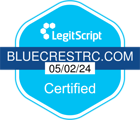Overview of Social Media Trends
Social media has fundamentally transformed communication and social interaction. Platforms like Facebook, Instagram, and TikTok have become central to daily life, facilitating communication across demographics. Trends show a growing reliance on these platforms, nurturing new forms of community and identity. This has made social media a powerful tool for shaping public discourse, influencing everything from politics to health awareness. The pervasive use raises concerns about mental health, as constant exposure to curated lifestyles can lead to unrealistic comparisons and anxiety. Understanding these trends is vital for recognizing social media’s role, particularly its potential influence on vulnerabilities like substance abuse.
The blend of social media interaction and real-world vulnerabilities necessitates a keen understanding of the multifaceted roles these platforms play. As people increasingly share experiences and opinions, they must contend with the psychological impacts of these digital landscapes. Understanding these trends is crucial, particularly as they pertain to substance abuse. Identifying these dynamics helps us address the nuanced relationship between digital consumption and dependency patterns, recognizing the critical intersections between social behavior, societal norms, and individual mental health.
Understanding Substance Abuse
Substance abuse is a condition marked by the detrimental use of psychoactive substances, such as alcohol and drugs, leading to adverse life impacts. Various factors, including genetic predispositions and mental health issues, contribute to this complex issue. Key elements of substance abuse include health consequences, societal stigma, treatment options, and recovery resources. Many individuals face social judgments, inhibiting their willingness to seek help. Recognizing the multifaceted nature of this condition is essential for improving treatment access and fostering recovery-friendly environments.
Substance abuse often reveals underlying psychological issues, as individuals may use these substances as stress or trauma coping mechanisms. Ongoing use can lead to withdrawal effects, complicating recovery. By understanding these facets, society can reduce stigma and improve access to treatment. Programs like Intensive Outpatient Programs can be highly beneficial for maintaining therapeutic support while allowing individuals to engage with daily responsibilities. Recognition plays a crucial role in encouraging supportive environments for recovery, fostering an understanding of this condition’s complexities. As many grapple with substance dependence, such awareness is essential for promoting community-based interventions and therapeutic opportunities.
Risk Factors Involved
Understanding substance abuse involves exploring various risk factors. Social isolation can lead individuals to substances to cope with loneliness, which is often exacerbated by a lack of connections. Online addiction can deepen isolation, leading to diminished real-life interactions and reliance on virtual environments. Mental health disorders like anxiety and depression may lead to substance use for emotional regulation. Social media can positively and negatively influence behavior through digital empathy or harmful modeling. Users may observe peers engaging in substance use, altering risk perception and normalizing such behaviors.
Socio-cultural factors, such as peer pressure and societal attitudes, significantly impact substance use, especially during identity formation years. These dynamics create environments where virtual interactions may support recovery or contribute to substance abuse, emphasizing the need for nuanced understanding. The interplay of these factors calls for careful navigation of social media landscapes to ensure that digital influences do not exacerbate vulnerability to substance-related issues.
Social Media’s Influence on Behavior
Social media significantly shapes behavior by reinforcing peer influences and norms, which can lead to increased substance use. The allure of escapism through online platforms increases this trend as individuals seek relief from reality. Constant comparison with curated online personas can undermine self-esteem, prompting substance use as a coping mechanism. Peer influence, especially among adolescents, is heightened by digital dynamics, promoting conformity. Online communities reinforce norms, impacting how individuals perceive substance use, further complicating the relationship social media has with behavioral health.
Dynamics of online interactions can lead to risk-taking and substance use normalization, especially among youth. Social platforms amplify influence through streams of curated content that celebrate risky behaviors. These spaces blur lines between experimentation and habitual use, trivializing or glamorizing substance consumption. Increased anonymity aids in engaging behaviors otherwise avoided in real life. Understanding these dynamics is crucial for developing prevention strategies, enabling healthier social media interactions to help mitigate substance abuse among vulnerable populations.

Final Thoughts
Social media use and substance abuse present significant challenges and opportunities for intervention. Recognizing social media’s dual role as a catalyst for risky behaviors and a platform for positive influence allows for targeted prevention strategies. Encouraging awareness about curated content and peer interactions is vital for promoting healthier environments. Exploring options like a Luxury Rehab Center might offer personalized care for those seeking a comprehensive, dynamic approach to recovery. Addressing these dynamics can lead to effective approaches to mitigating substance abuse among vulnerable populations.
If you or a loved one is struggling with addiction, remember that you don’t have to navigate this journey alone. At BlueCrest Recovery, we’re here to provide the support and resources needed to help you move from a place of powerlessness to one of strength and healing. Don’t hesitate to reach out to our team online or call us today. Let us walk with you on your journey to recovery. Follow us on Facebook for ongoing insights, encouragement, and support.
Frequently Asked Questions
How Do Age Demographics Impact Social Media Use and Substance Abuse Links?
Age demographics significantly influence youth engagement on social media, shaping behavioral patterns. Younger individuals, often more susceptible to peer influence, may exhibit heightened vulnerability to substance abuse, underscoring the need for tailored prevention strategies across different age groups.
Are There Specific Social Media Platforms Associated With Higher Substance Abuse Risk?
Research indicates that platforms like Instagram, TikTok, and Snapchat may heighten substance abuse risk because of addictive features and peer exposure. Facebook influences social behaviors, whereas Twitter interactions and YouTube content can normalize substance-related themes.
Can Social Media Promote Positive Behaviors to Combat Substance Abuse?
Social media can undoubtedly promote positive behaviors to combat substance abuse by nurturing supportive communities and facilitating awareness campaigns. These platforms enable individuals to share experiences, access resources, and encourage healthier choices, ultimately reducing the stigma of seeking help.
What Role Does Parental Supervision Play in Children’s Social Media Use?
Parental supervision significantly influences children’s social media use by establishing digital boundaries. Active parental involvement promotes healthier online behaviors, ensuring children navigate social media safely, develop critical thinking, and understand the potential impact of their digital interactions.
How Can Individuals Recognize Unhealthy Social Media Habits Related to Substance Use?
Individuals can recognize unhealthy social media habits by identifying triggers, like unhealthy comparisons or online peer pressure, which may promote addictive behaviors and potentially lead to substance-related issues.


















